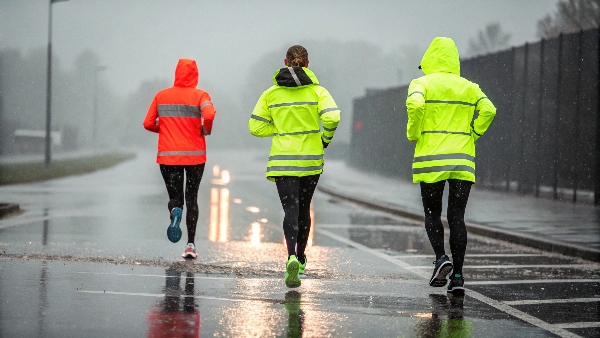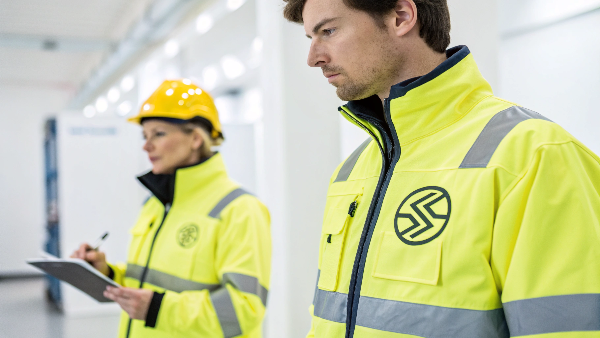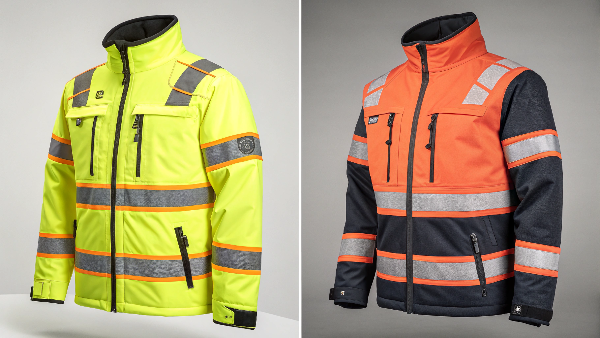Low visibility causes too many accidents on busy work sites. Workers can get seriously hurt if drivers or machine operators do not see them. We offer clothing that makes people easy to see, keeping them safe.
Yes, high visibility clothing is very necessary, especially in dangerous jobs. It helps people see workers much better. This is super important on construction sites, near roads, or around big machines. It keeps workers safe from harm.
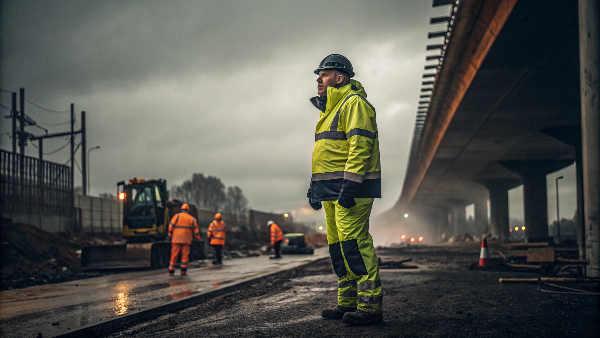
You might wonder just how important this gear is. Does it make a real difference, or is it just another rule to follow? We believe it's a lifesaver, and understanding why can change how you see workplace safety. Let's look closer at what makes this clothing so vital and who needs it most.
Is high-visibility clothing mandatory?
Do you ever wonder if wearing bright safety clothes is a choice or a rule? Many workers face danger if they are not seen. We make sure our gear meets the rules so your teams are protected and compliant.
In many jobs, yes, high-visibility clothing1 is mandatory. Safety rules, like those from OSHA2, often say workers must wear it in risky areas. This helps prevent accidents by making workers stand out.
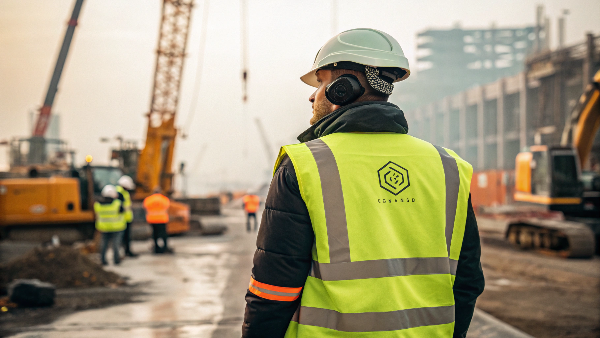
It's true, for many jobs, you can't just choose to wear high-visibility clothing; it's a rule. Think about road construction crews. They work right next to fast-moving traffic. If drivers can't see them easily, day or night, terrible accidents can happen. That's why organizations like OSHA (Occupational Safety and Health Administration) in the US have specific rules. These rules often point to standards like ANSI/ISEA 1073. This standard clearly says who needs hi-vis, what kind, and when. For example, anyone working on federal-aid highways must wear it. Many private companies also make it a rule for their own safety policies. At Vissafety, we study these rules very carefully. We want to make sure every vest, jacket, or pair of pants we make helps companies like yours meet these important safety laws. We remember a client, much like Danny Cheng, who was so relieved to find our products met all the strict North American standards he needed for his workers in logistics. It took a big worry off his shoulders.
| Situation | Mandatory? | Common Requirement Source |
|---|---|---|
| Federal-aid highway workers | Yes | OSHA, ANSI/ISEA 107 |
| Construction sites near traffic | Yes | OSHA, Company Policy |
| Airport ground crew | Yes | FAA, Company Policy |
| Emergency responders at incidents | Yes | NFPA, Department Policy |
| General factory, low light | Often | Company Policy |
How effective is high-visibility clothing4?
Are you concerned that standard workwear isn't enough to keep your team safe in low light? Poor visibility leads to preventable accidents. Our hi-vis clothing uses science to make sure your workers are seen clearly.
High-visibility clothing is very effective. Its bright colors stand out in daylight, and reflective tapes5 shine brightly in headlights at night. This greatly reduces the chance of accidents by making people much easier to see.

So, how does this special clothing actually work its magic? It's not just about being bright; there's real science to it. First, you have the fluorescent background material6. These colors – usually bright yellow-green, orange-red, or red – are super effective during the day. They react with the sun's UV rays, making them appear to glow, especially at dawn and dusk when light is poor. This creates a strong contrast against most backgrounds. Then, for nighttime or low-light conditions, you have the retroreflective tape. This tape doesn't glow on its own. Instead, it has tiny glass beads or microprisms that bounce light directly back to the source, like car headlights. So, if a car is approaching, the driver sees the tape light up brilliantly. The combination of these two features dramatically increases the distance from which a worker can be seen. Studies have shown this gives drivers and equipment operators much more time to react, preventing countless accidents. We've seen this firsthand. I recall a story from a construction manager who said our Vissafety Class 3 jackets, with their extensive reflective striping, were clearly visible from over 1,000 feet away on a poorly lit site, preventing a near-miss with a reversing truck. That's effectiveness you can count on.
Is it a legal requirement to wear hi-vis?
Worried about fines or legal trouble if your team isn't properly equipped? Not following safety gear rules can lead to big problems. Using compliant hi-vis clothing is a simple way to meet legal duties.
Yes, in many situations, it is a legal requirement to wear hi-vis clothing. Laws like OSHA in the USA, and similar rules in other countries, make it compulsory for workers in hazardous, low-visibility environments.

The question of legal requirements comes up a lot, and it's a serious one. In the United States, OSHA is the main body that sets and enforces workplace safety. While OSHA itself might not say "you must wear Brand X hi-vis vest," it does have a general duty clause. This clause requires employers to provide a workplace free from recognized hazards. And being invisible to traffic or machinery is definitely a hazard! More specifically, OSHA often refers to consensus standards like ANSI/ISEA 107. For example, Section 5(a)(1) of the OSH Act is the General Duty Clause. For road work, 23 CFR Part 634 specifically mandates ANSI/ISEA 107 compliant garments for workers on federal-aid highways. Failure to comply can lead to citations and fines. It's not just about avoiding penalties, though. It's about protecting lives. Many companies, like Danny Cheng's, understand this deeply. He always prioritizes gear that meets or exceeds these legal standards because he knows it's the best way to protect his clients' employees and his own business from liability. We ensure our Vissafety products are certified to these standards, so our customers know they are meeting their legal obligations.
Why do people wear high-visibility clothing?
Do you think people only wear hi-vis because they have to? Many assume it's just about rules. But the real reasons go much deeper, starting with the basic human need to stay safe and go home unhurt.
People wear high-visibility clothing primarily for safety. It makes them much easier to see, preventing accidents with vehicles or machinery. It's also often a company rule or a legal requirement for their job.
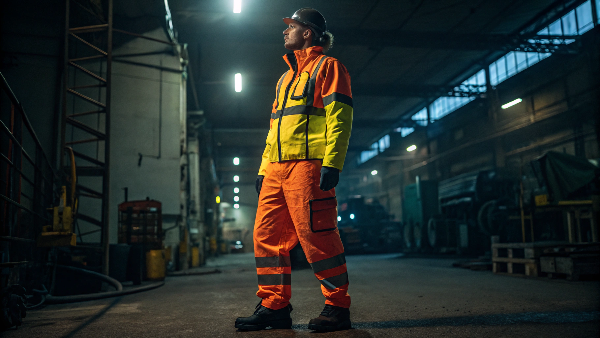
Beyond the rules and regulations, there are some very practical and personal reasons why people wear high-visibility clothing. The most obvious one is to prevent accidents. No one wants to get hit by a car or a piece of heavy equipment. Wearing hi-vis gear drastically reduces that risk, especially in complex environments like construction sites, warehouses, or along roadways. I've talked to many workers over the years, and they often say they feel much safer when they're wearing it. It gives them peace of mind knowing they are doing everything they can to be seen. For employers, it's about protecting their workforce, which is their most valuable asset. It also reduces lost workdays due to injury, lowers insurance premiums, and demonstrates a commitment to safety. Many companies, like those Danny Cheng supplies, build their reputation on safety and reliability. They choose high-quality, compliant hi-vis gear because it aligns with their company values. It's a visible sign that they care about their people. Plus, in some cases, it can even make jobs easier, like helping to identify team members or specific roles on a busy site.
What is the OSHA standard for high-visibility clothing?
Are you unsure which hi-vis standard your team needs to meet for OSHA? Choosing the wrong gear can be risky and non-compliant. Understanding OSHA's referenced standard, ANSI/ISEA 107, is key to proper selection.
OSHA often refers to the ANSI/ISEA 107 standard for high-visibility safety apparel. This standard details requirements for garment types, colors, and the amount of reflective material needed for different risk levels.
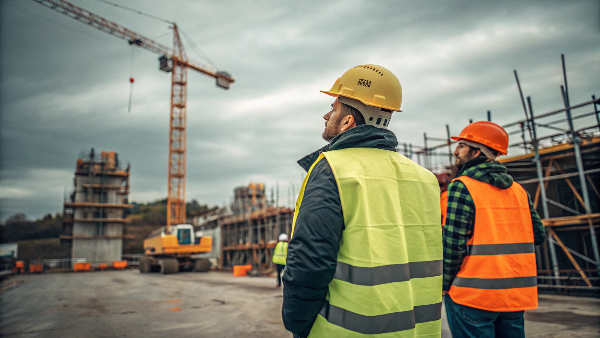
When we talk about OSHA and high-visibility clothing, the conversation almost always turns to the ANSI/ISEA 107 standard. This is the American National Standard for High-Visibility Safety Apparel and Accessories. OSHA recognizes this as the industry consensus standard. It's quite detailed and specifies the performance requirements for materials, including the color (fluorescent yellow-green, fluorescent orange-red, or fluorescent red for background material) and the retroreflectivity of the tapes. It also defines different garment types and classes based on the amount of visible materials and the design.
Here's a simple breakdown of the classes:
| Class | Description | Minimum Background Material | Minimum Retroreflective Material | Typical Environment |
|---|---|---|---|---|
| Type O, Class 1 | Off-road use; lowest recognized amount of material | 217 sq. inches | 155 sq. inches | Warehouse workers, parking attendants (away from road) |
| Type R or P, Class 2 | Roadway use; for workers near traffic slower than 50 mph | 775 sq. inches (R), 450 (P) | 201 sq. inches | Road construction, utility workers, school crossing guards |
| Type R or P, Class 3 | Roadway use; for workers near traffic faster than 50 mph, or in complex sights | 1240 sq. inches (R), 775 (P) | 310 sq. inches | Highway crews, emergency responders, survey crews |
| Class E | Hi-vis pants/shorts worn alone (not compliant) or with Class 2/3 top to make an ensemble | 465 sq. inches | 107 sq. inches | Combined with vest/jacket for higher overall class |
At Vissafety, all our ANSI-compliant garments are carefully designed and tested to meet these specific requirements. This ensures that when you choose our products, you're getting gear that truly enhances visibility and helps you comply with OSHA's expectations. Danny Cheng, for instance, relies on us for Class 2 and Class 3 garments for his North American clients, knowing our R&D lab rigorously tests every batch.
Who is required to wear high-visibility clothing?
Are you wondering if your specific job or your employees' roles need hi-vis gear? It's not always clear who falls under the requirements. Knowing the typical high-risk professions can help clarify this.
Workers in environments with moving vehicles or equipment, or in low light, are often required to wear high-visibility clothing. This includes construction workers, road crews, emergency responders, and airport personnel.
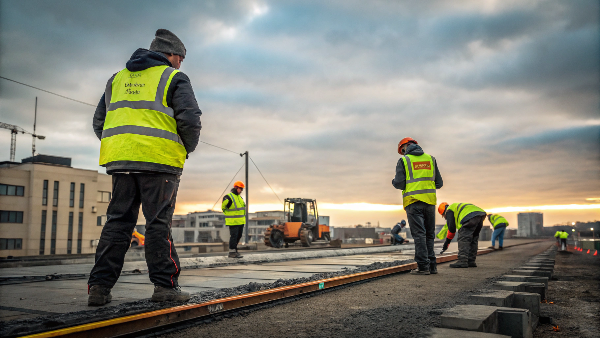
Many different types of workers need high-visibility clothing to stay safe. The key factor is usually exposure to hazards from moving vehicles or equipment, especially in low light or complex visual environments. Think about people working on or near roads – that’s a big one. This includes road construction and maintenance crews, utility workers, survey teams, and emergency responders like police, firefighters, and paramedics when they are at an incident scene. Airport ground crews, who work around moving planes and service vehicles, also need to be highly visible. In construction sites, away from public roads, you’ll see many workers in hi-vis, from equipment operators to general laborers, because of the constant movement of machinery. Tow truck drivers, railway workers, and even some warehouse staff operating forklifts often wear it. We at Vissafety serve a lot of these industries. For example, large corporate buyers in construction and logistics, like Danny Cheng's clients, depend on us to supply compliant and durable hi-vis for their teams. The goal is always the same: make sure the worker can be seen by those who could accidentally harm them. It's a fundamental part of their personal protective equipment (PPE).
Is pink hi vis OSHA approved?
Have you seen pink hi-vis gear and wondered if it actually meets safety standards like OSHA's? The color of hi-vis clothing is very specific for compliance. Using non-standard colors can compromise safety and legality.
No, pink hi-vis is generally not OSHA-approved for meeting ANSI/ISEA 107 requirements. This standard specifies fluorescent yellow-green, orange-red, or red for the background material to ensure maximum visibility.
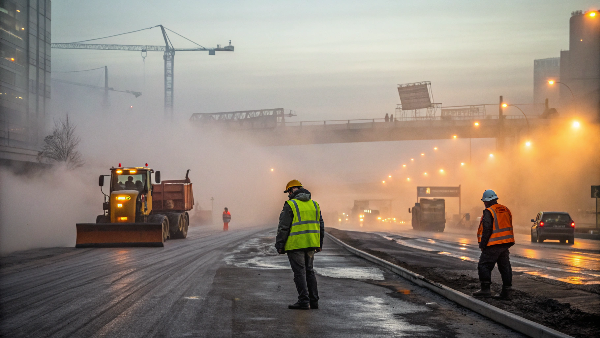
This is a common question, especially as more color options appear on the market. For official, standards-compliant high-visibility clothing that meets OSHA's expectations (by referencing ANSI/ISEA 107), the answer is generally no, pink is not an approved background color. The ANSI/ISEA 107 standard is very specific about the colors that provide the best conspicuity against most work environments. These are:
- Fluorescent Yellow-Green
- Fluorescent Orange-Red
- Fluorescent Red
These colors have been scientifically tested for their visibility during daylight hours and in various weather conditions. Pink, while bright, doesn't offer the same level of fluorescent performance or contrast in typical hazardous work environments as these three approved colors. So, if a job requires ANSI/ISEA 107 compliant garments (which is often the case for OSHA compliance in relevant sectors), pink garments would not meet the standard for the main background material. However, sometimes companies might use other bright colors for identification purposes in non-regulated environments, or as accents on compliant garments. At Vissafety, while we excel at customization and can produce various colors, we always guide our clients like Danny Cheng to use compliant colors for any application where ANSI/ISEA 107 or similar standards are required. Safety and compliance come first.
How often should you replace your high-visibility clothing?
Do you just keep wearing your hi-vis vest until it falls apart? Old, dirty, or faded hi-vis clothing doesn't protect you well. Knowing when to replace it is key to staying safe.
You should replace high-visibility clothing when it's faded, torn, dirty, or the reflective tape is damaged. Its effectiveness decreases with wear and washing, so regular inspection and replacement are crucial for safety.

High-visibility clothing isn't meant to last forever. Its special properties can degrade over time with wear, tear, dirt, and repeated washing. The fluorescent background material can fade from sun exposure, reducing its brightness and ability to stand out during the day. The retroreflective tapes can get cracked, peel off, or become soiled, which significantly reduces their ability to reflect light back at night. So, how often should you replace it? There's no single, fixed timeline like "every six months," because it depends heavily on the work environment and how much wear the garment gets. A good rule is to inspect your hi-vis gear regularly, perhaps before each shift. Look for:
- Fading: Is the color significantly duller than a new garment?
- Stains: Heavy soiling, especially with grease or asphalt, can permanently impair fluorescence and reflectivity.
- Damage: Rips, tears, or worn areas in the fabric.
- Reflective Tape Condition: Is it cracked, peeling, missing sections, or heavily abraded?
Most manufacturers, including us at Vissafety, provide guidelines on the number of washes a garment can typically endure while maintaining its properties. For example, some of our garments are certified for up to 25 or 50 washes. Always follow the care label instructions. If a garment is damaged or its visibility features are clearly compromised, it should be replaced immediately. It’s better to invest in a new piece of hi-vis than to risk an accident because you weren't seen. Danny often stresses to his clients the importance of regular replacement schedules for their workers' gear.
Who wears high-visibility clothing?
Are you curious about all the different jobs that rely on hi-vis gear every day? It's not just road workers. Many professions depend on being seen to stay safe and do their jobs effectively.
Many people wear high-visibility clothing, including construction workers, road maintenance crews, emergency services, airport staff, railway workers, surveyors, and event marshals. Anyone working near traffic or moving machinery often uses it.
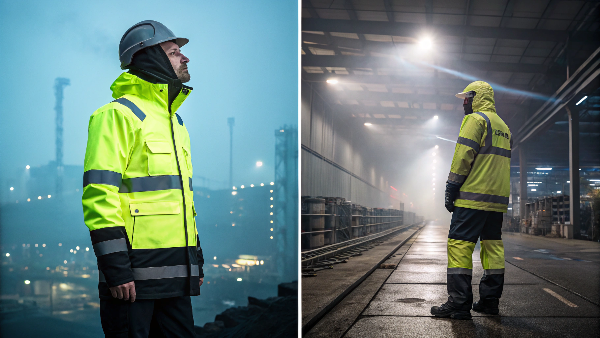
The range of people who wear high-visibility clothing is quite broad, and it really highlights how common low-visibility hazards are in various workplaces. We've already touched on some key groups, but let's expand.
You'll see construction workers of all types, from those building skyscrapers to those laying pipes. Road crews are a must, including flaggers, pavers, and line painters. Emergency responders – police, fire, and EMS – wear it at incident scenes to be seen by traffic and each other. Airport ground personnel, like baggage handlers and aircraft maintenance crews, operate in a busy environment with lots of vehicle movement.
Then there are railway workers, maintaining tracks or working in yards. Utility workers dealing with power lines, gas, or water often work near roads or in low-light conditions. Surveyors need it when working near traffic or in remote areas. Tow truck operators are highly vulnerable at roadsides. Even event staff or school crossing guards use it to manage crowds and traffic safely. Some recreational users, like cyclists and runners, also choose to wear hi-vis for personal safety, though their requirements aren't mandated by workplace laws. At Vissafety, our focus is on these professional B2B clients, providing bulk orders of compliant and durable apparel for these hardworking individuals.
Conclusion
In short, high-visibility clothing is vital for safety in many jobs. It helps prevent accidents by making workers easy to see, and it's often legally required.
-
Understanding the regulations around high-visibility clothing can help ensure safety and compliance in various jobs. Explore this link for detailed insights. ↩
-
OSHA sets crucial safety standards. Learn more about their regulations to keep your workplace safe and compliant. ↩
-
ANSI/ISEA 107 outlines essential standards for safety apparel. Discover how these guidelines can protect workers effectively. ↩
-
Explore the benefits of high-visibility clothing to understand how it enhances safety and reduces accidents in low-light conditions. ↩
-
Learn how reflective tapes work to enhance visibility at night, ensuring worker safety in low-light environments. ↩
-
Discover the science behind fluorescent materials and their role in improving visibility during the day for safety gear. ↩

